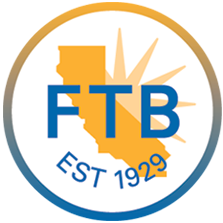Introduction
Schedule I (Form 1041) is a supplemental form used by estates and trusts when filing their annual income tax returns (Form 1041). It calculates the alternative minimum tax (AMT) that may apply to the estate or trust.
Schedule I is often used in conjunction with Form 990-T, which is filed by tax-exempt organizations. If an estate or trust is also tax-exempt, it may need to file both 1041 tax form and form 990 t
In this resource guide, we will learn about the key aspects of Schedule I (Form 1041), from its purpose to filing requirements and commonly asked questions.
What is Schedule I (Form 1041)?
Schedule I (Form 1041) is a supplemental form used to calculate the alternative minimum tax (AMT) for estates and trusts. The form adjusts taxable income by adding back items that are treated differently under the AMT rules, such as depreciation or passive activity losses. This ensures that the estate or trust pays at least the minimum amount of tax required by law.
It includes several lines for entering various types of income, adjustments, preferences, and exemptions that are used to determine the AMT.
Streamline Your 990-T Filing with TaxZerone!
Make your e-filing process simple by clicking the button below.
Who must file Schedule I (Form 1041)?
Schedule I (Form 1041) must be filed by estates and trusts that have certain types of income or deductions that could trigger the Alternative Minimum Tax (AMT).
Specifically, if the estate or trust has an income that exceeds the exemption amount or claims significant deductions that reduce its regular tax liability, filing Schedule I is mandatory. The exemption amount varies depending on the filing status of the estate or trust.
Choose TaxZerone to complete your Schedule I (Form 1041) filing
TaxZerone offers a seamless, user-friendly platform designed to simplify the filing process for Schedule I (Form 1041).
With TaxZerone, you can ensure accuracy, compliance, and peace of mind, knowing that your filing is handled by professionals who understand the intricacies of estate and trust taxation.
Even if the IRS rejects your return, you can correct and retransmit it at no additional cost.
Here’s how your Form 990-T return with Schedule I (Form 1041) attachment is transmitted to the IRS - just 3 simple steps!
- Provide Organization Details - Choose the tax year for which you want to file a return, and provide your organization’s details.
- Preview 1041 Schedule I - Attach Schedule I to report the alternative minimum tax (AMT) for estates and trusts and preview the information provided in the return for accuracy before transmitting.
- Transmit to the IRS - Transmit Schedule I along with your 990-T Return to the IRS and get the acceptance in just a few hours.
Whether you're filing for the first time or need assistance with a complex situation, TaxZerone is here to help.
Embark on a Smooth Schedule I Filing Journey with TaxZerone
Complete your Schedule I filing requirements with ease!
E-File Now










